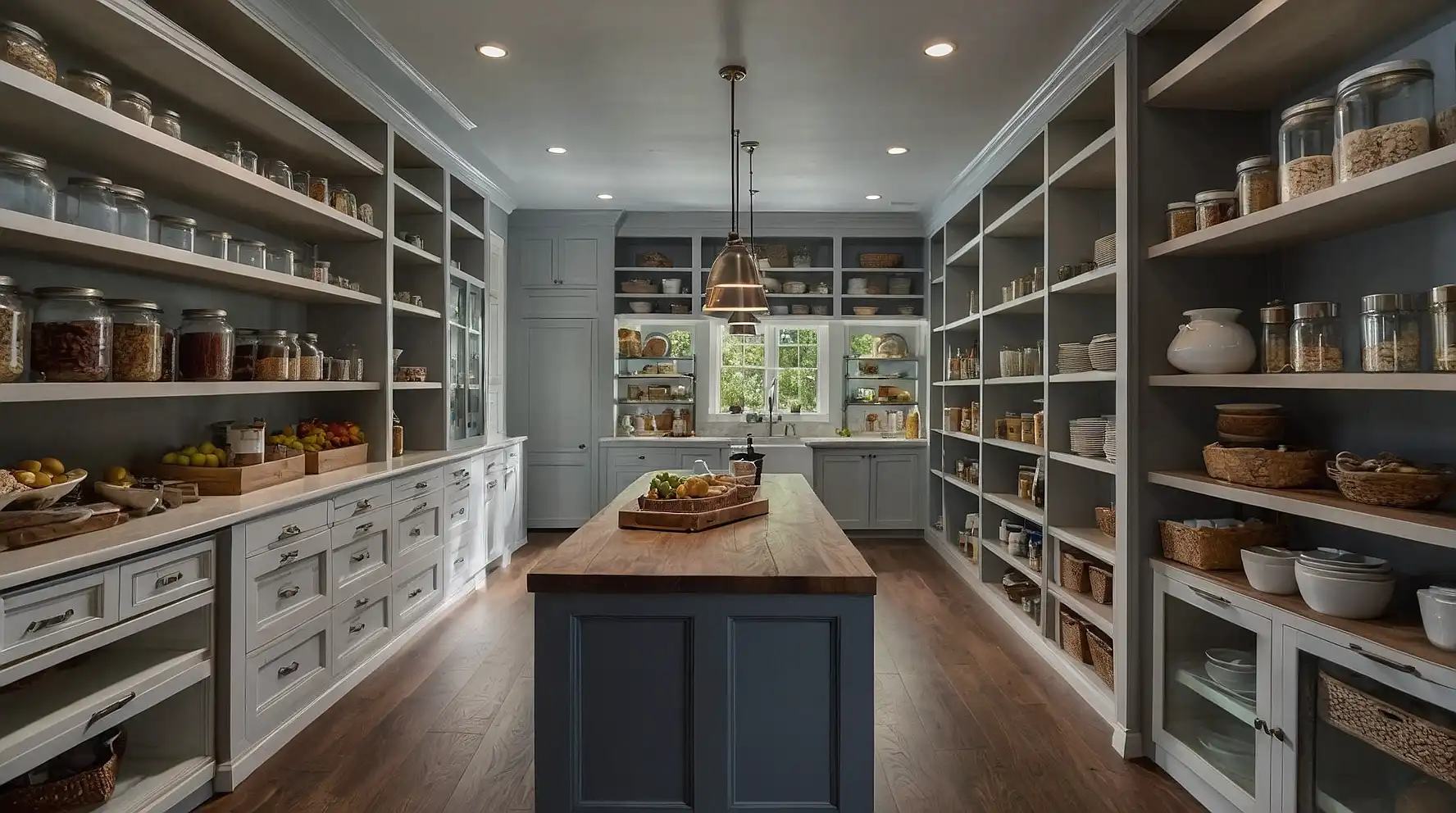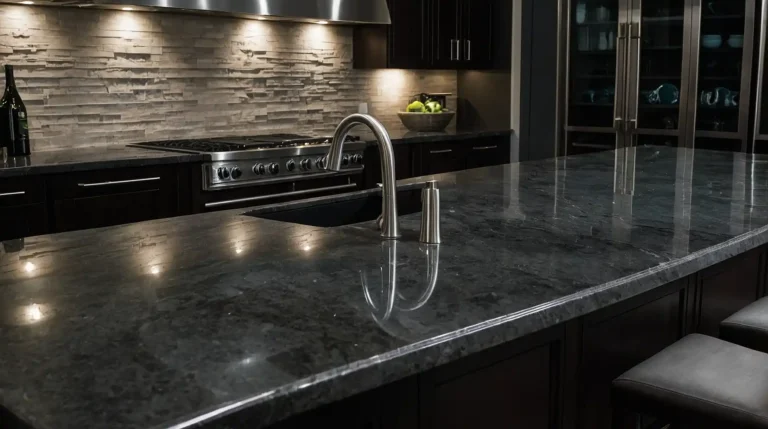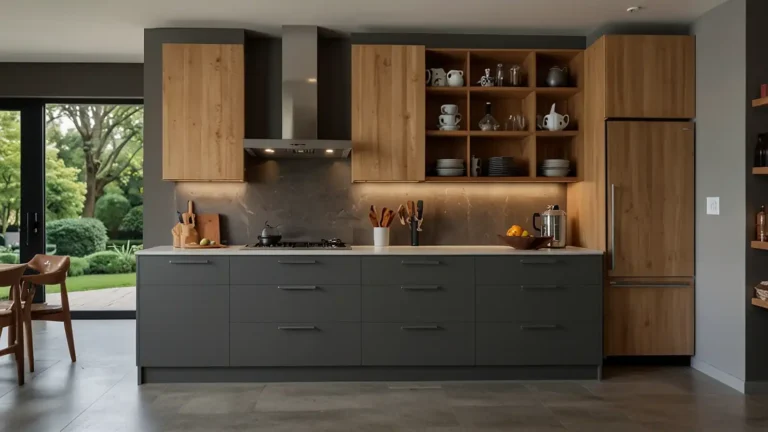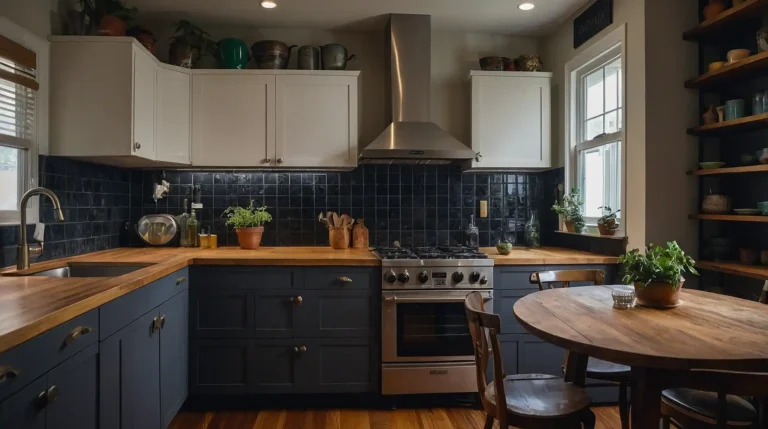27 Best Walk in Pantry Ideas
Your walk-in pantry represents valuable real estate that deserves thoughtful organization and design.
Transform this space into a functional command center for your kitchen needs.
Smart storage solutions maximize every inch while keeping items easily accessible.
You’ll discover ideas for both large and compact pantry spaces.
These creative concepts combine practicality with style to create pantries you’ll love using.
Let’s explore ways to organize your food storage beautifully and efficiently.
1: Install Floor-to-Ceiling Adjustable Shelving
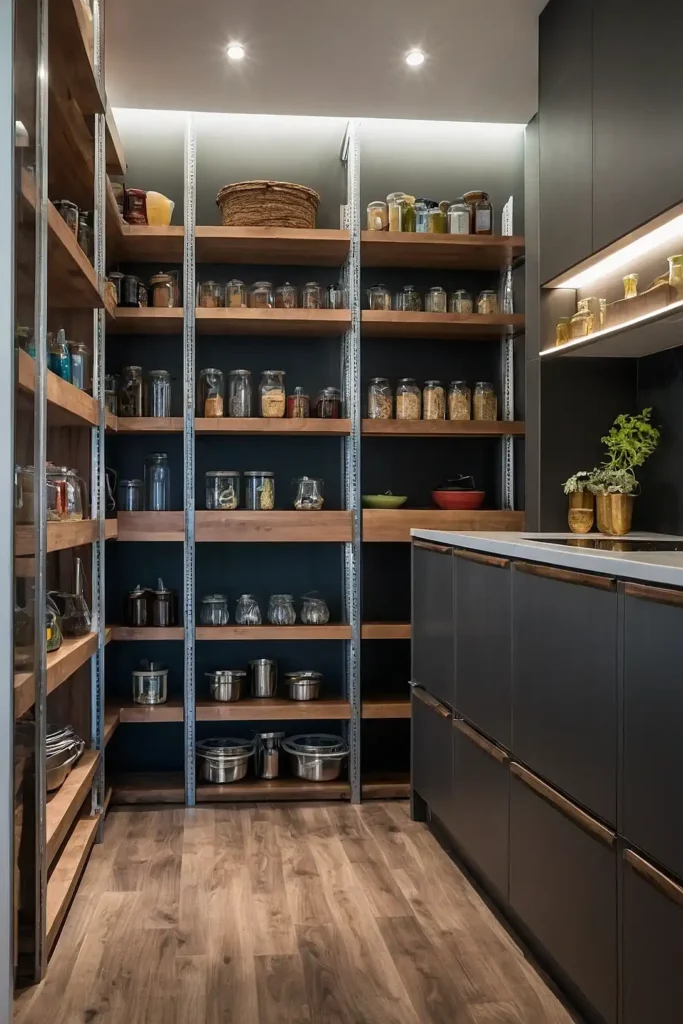
Mount adjustable shelving systems that reach from floor to ceiling for maximum storage capacity.
Choose sturdy materials like wood or heavy-duty metal brackets.
Adjust shelf heights to accommodate different container sizes throughout the year.
Leave space for seasonal items like holiday baking supplies or bulk purchases.
You’ll utilize every vertical inch while maintaining flexibility for changing storage needs. This system grows with your family’s requirements over time.
2: Create Clear Container Storage Systems
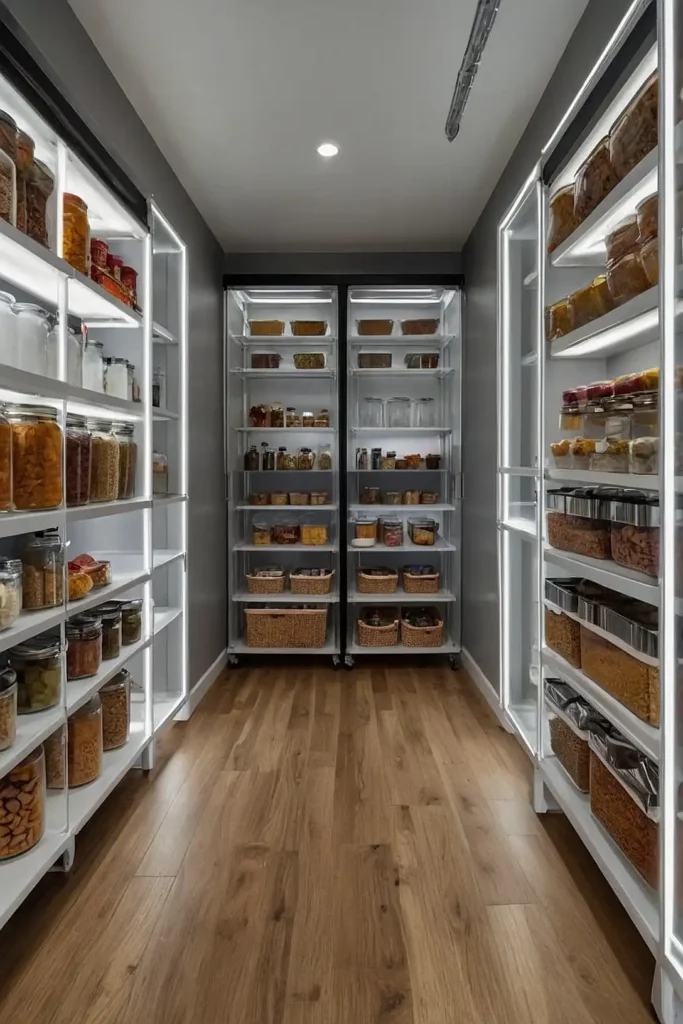
Transfer dry goods into matching clear containers with airtight seals for freshness and visual appeal.
Choose square or rectangular shapes for efficient shelf usage.
Label each container clearly with contents and expiration dates. Stack containers of the same size to maximize vertical space efficiently.
You’ll see inventory at a glance while keeping food fresh longer. This system prevents pest problems and reduces food waste significantly.
3: Add Pull-Out Drawer Units
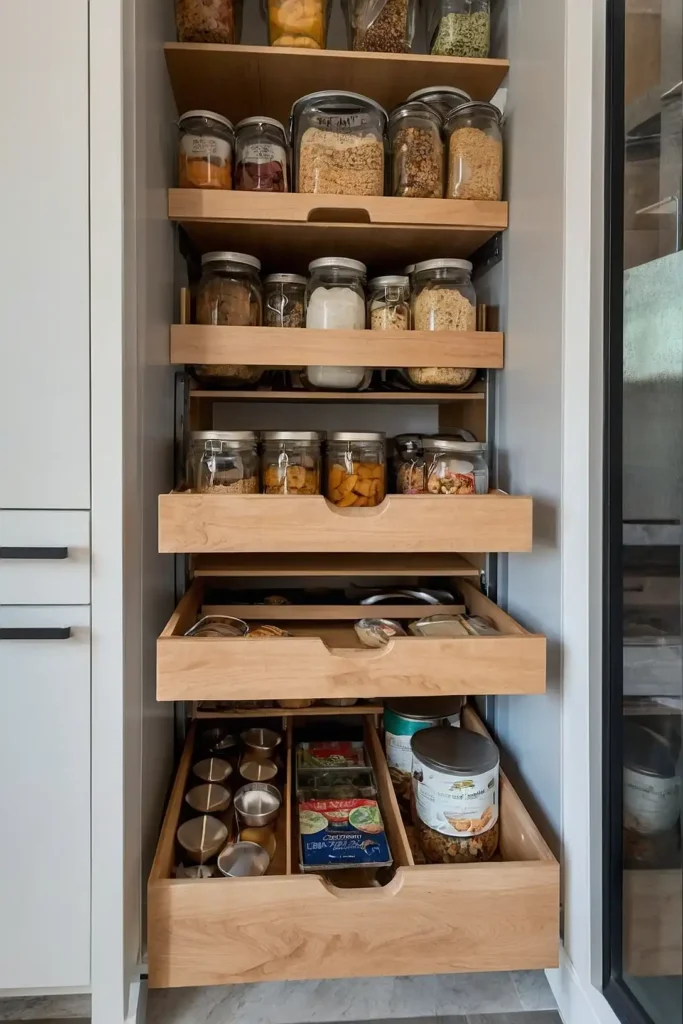
Install sliding drawer units in lower pantry areas for easy access to heavy items.
Choose full-extension slides that support substantial weight loads.
Store canned goods, small appliances, and bulk items in these convenient drawers.
This eliminates bending and searching through deep shelves unnecessarily.
You’ll access everything effortlessly while maximizing storage in hard-to-reach areas.
These drawers work especially well for elderly family members.
4: Design a Coffee and Beverage Station
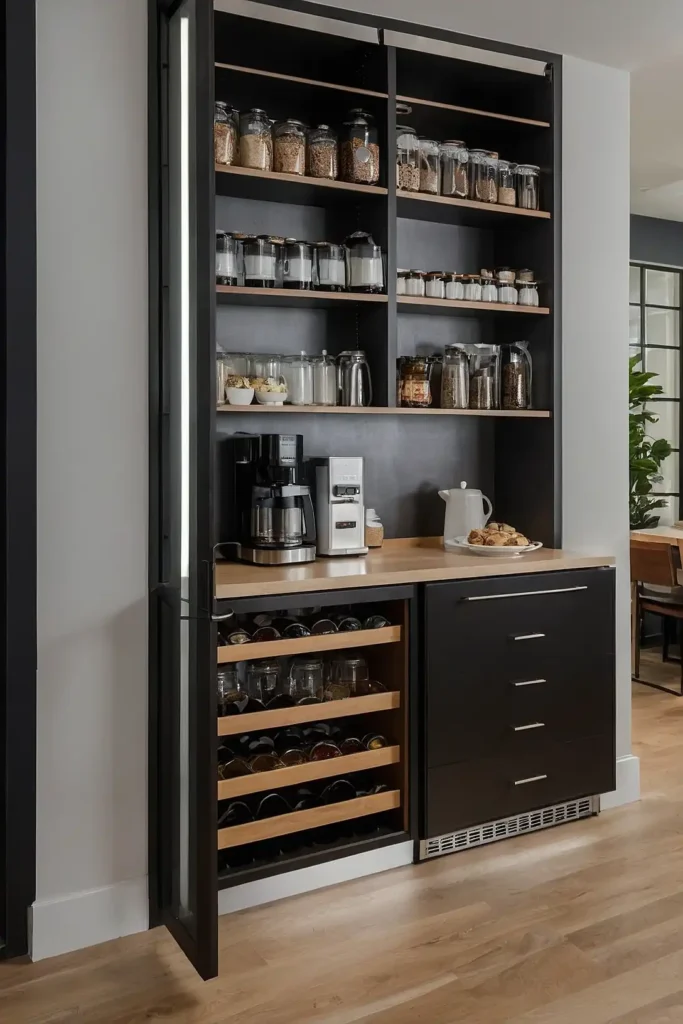
Dedicate one area to coffee supplies, teas, and beverage accessories for morning convenience.
Include storage for mugs, filters, and specialty equipment.
Add a small countertop or pull-out shelf for preparing drinks. Include electrical outlets for coffee makers or electric kettles if desired.
You’ll streamline morning routines while keeping beverage supplies organized and accessible.
This creates a secondary preparation area outside the main kitchen.
5: Install Door-Mounted Storage Racks
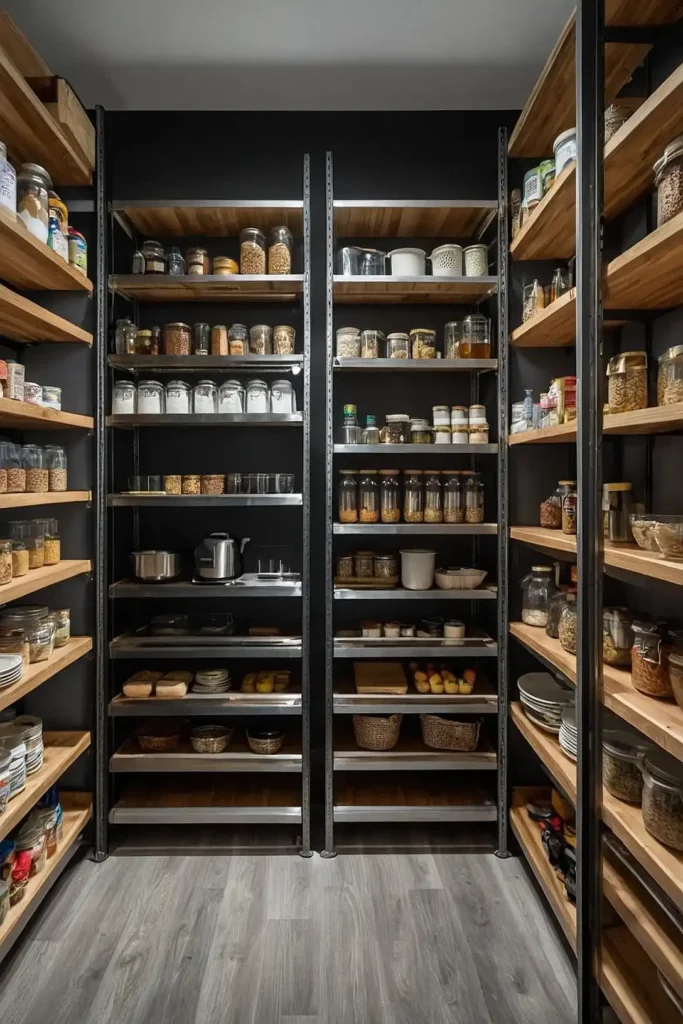
Mount narrow shelving systems on the inside of pantry doors for spices and small items.
Choose adjustable racks that accommodate different bottle sizes.
Store frequently used condiments, oils, and seasonings within easy reach. This maximizes door space that often goes unused completely.
You’ll free up valuable shelf space while keeping cooking essentials immediately accessible. These racks work perfectly for narrow or shallow pantries.
6: Create Bulk Storage Zones
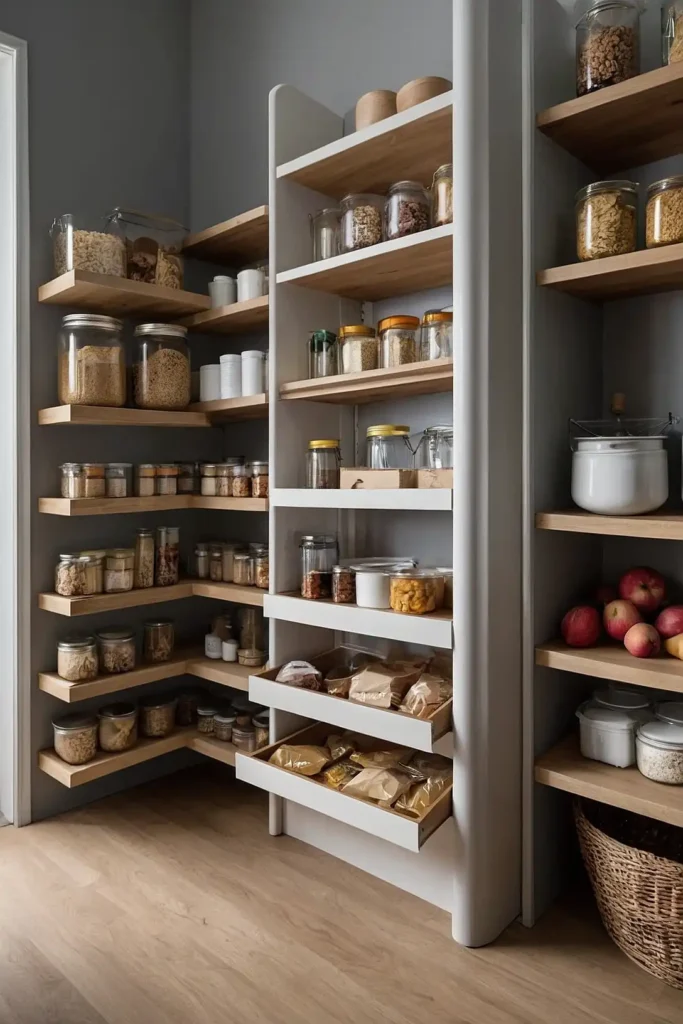
Designate specific areas for bulk purchases and large containers using sturdy lower shelving. Choose reinforced shelves that handle substantial weight safely.
Store items like flour, sugar, rice, and paper goods in this dedicated zone. Use rolling bins for easy access to heavy items.
You’ll take advantage of bulk purchasing savings while maintaining organized storage systems.
This prevents bulk items from overwhelming other pantry areas.
7: Add LED Strip Lighting
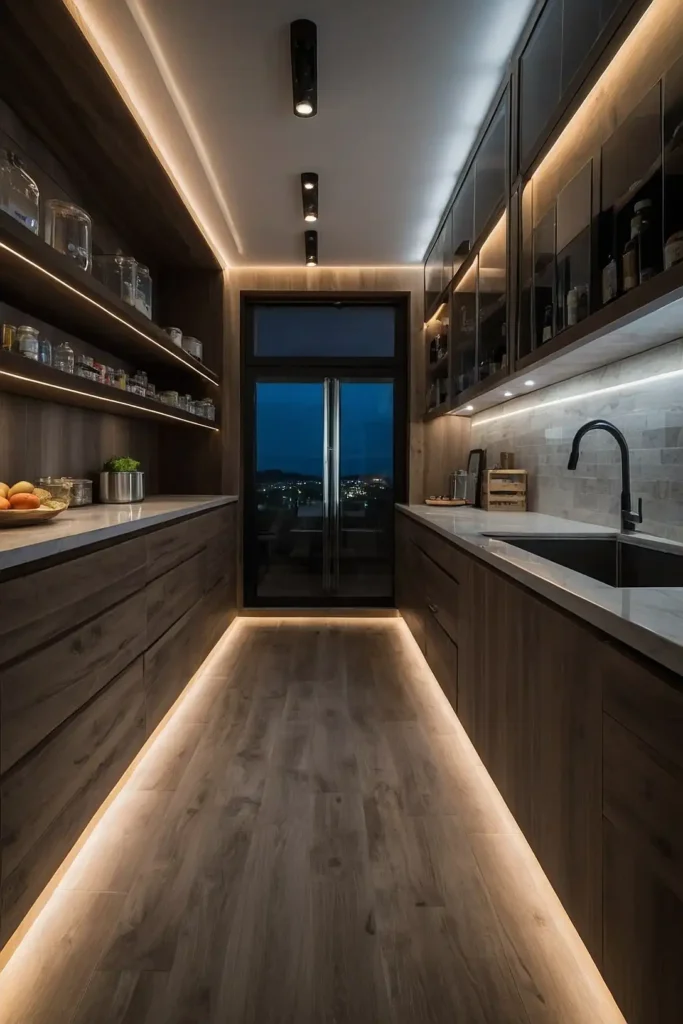
Install LED strip lighting under each shelf for bright, even illumination throughout the pantry.
Choose battery-operated or hardwired options based on accessibility.
Include motion sensors for automatic activation when entering the space. This eliminates fumbling for light switches with full hands.
You’ll see everything clearly while creating a bright, welcoming storage environment.
Good lighting makes inventory management much easier and safer.
8: Design Kid-Friendly Lower Storage
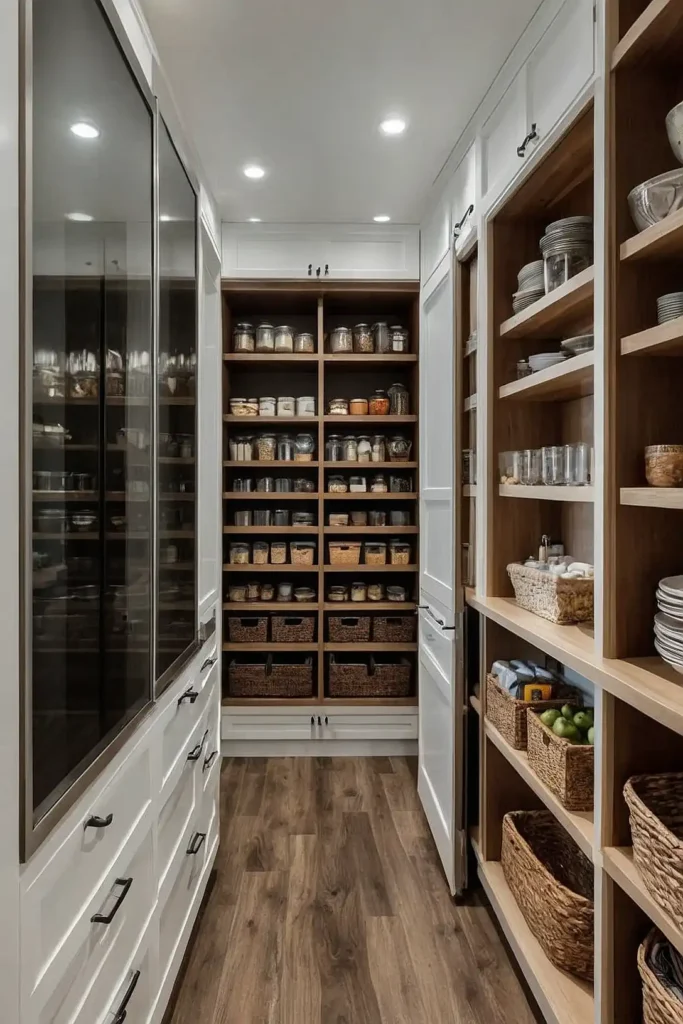
Create accessible storage areas at child height for snacks and school lunch supplies. Use open bins and lower shelves for easy reach.
Include step stools or pull-out platforms for reaching higher items safely. Label storage areas with pictures for non-reading children.
You’ll encourage independence while keeping healthy snacks easily accessible for growing families.
This reduces constant requests for help reaching items.
9: Install Lazy Susan Corner Units
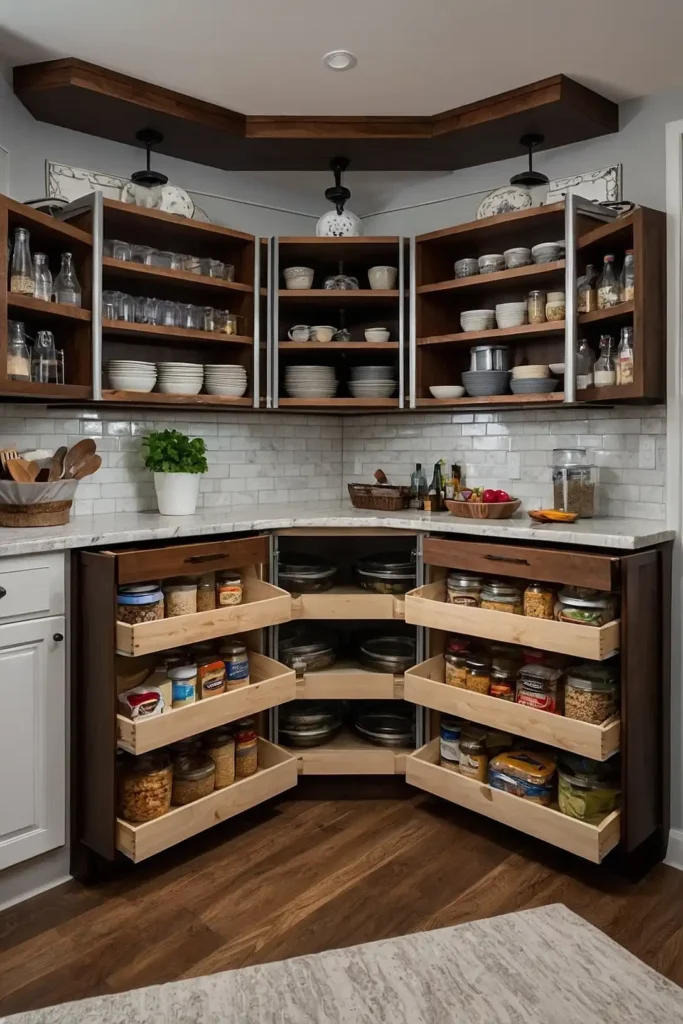
Add rotating lazy Susan systems in corner areas for efficient space utilization.
Choose two-tiered options for maximum storage capacity in awkward spaces.
Store condiments, oils, and frequently used items on these rotating shelves. This eliminates dead corner space that’s typically wasted completely.
You’ll access corner storage effortlessly while maximizing every available inch.
These units work especially well in L-shaped or wraparound pantries.
10: Create Baking Supply Central
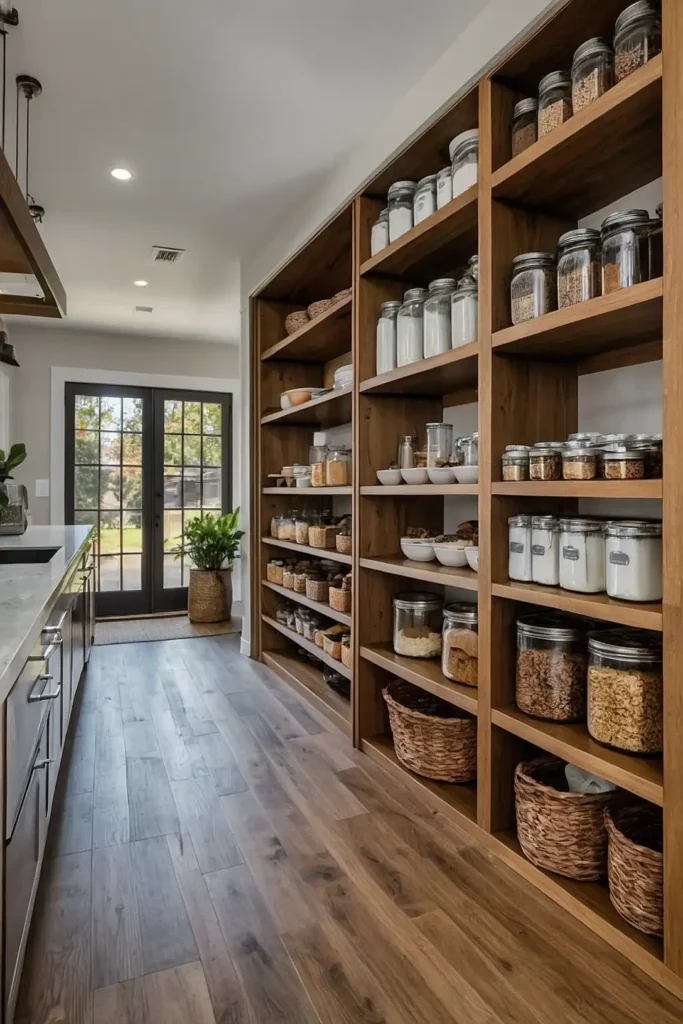
Organize all baking ingredients and tools in one dedicated section for convenience. Include storage for mixing bowls, measuring cups, and specialty tools.
Store flour, sugar, baking powder, and extracts together for easy recipe preparation.
Add a small counter area for mixing if space allows.
You’ll streamline baking projects while keeping ingredients fresh and organized efficiently.
This dedicated zone makes holiday baking much more enjoyable.
11: Add Wire Basket Storage Systems
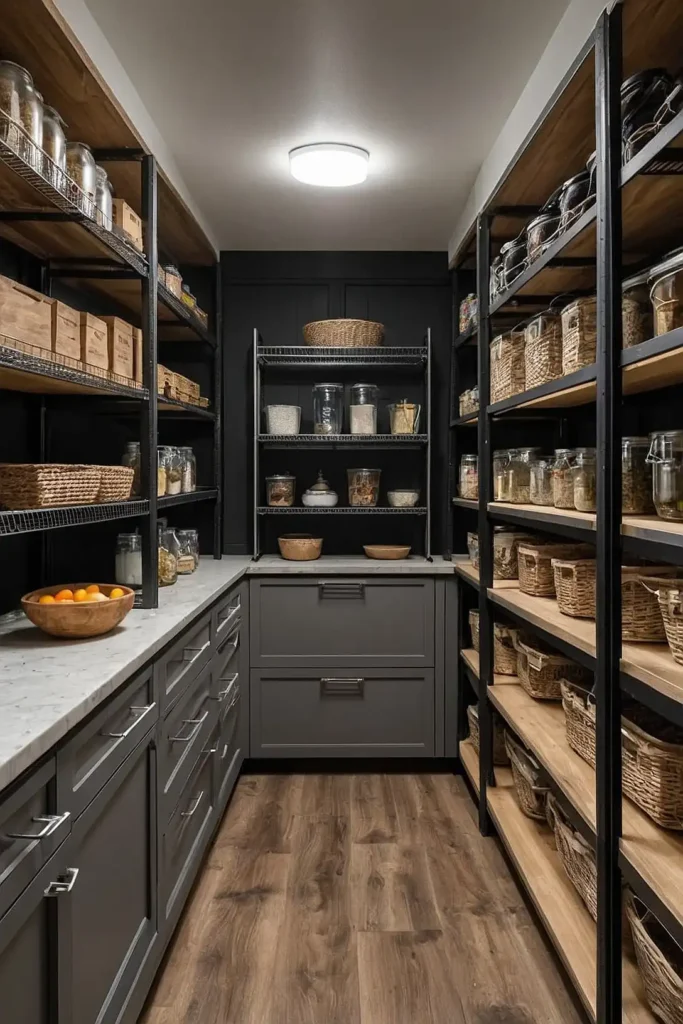
Install wire baskets on sliding tracks for ventilated storage of produce and items. Choose powder-coated options to prevent rust and ensure longevity.
Store potatoes, onions, garlic, and other vegetables that need air circulation. These baskets work well for bread and baked goods too.
You’ll maintain proper food storage conditions while keeping items visible and accessible.
Wire baskets prevent moisture buildup that spoils food quickly.
12: Design Appliance Storage Areas
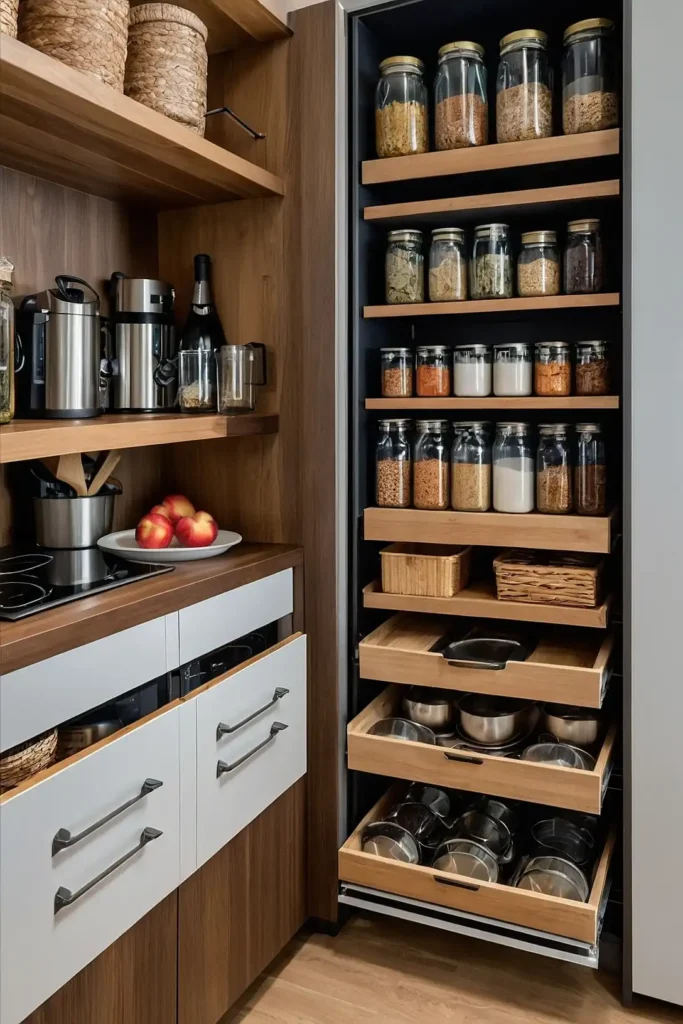
Create dedicated spaces for small appliances with easy access and electrical outlets. Include pull-out shelves or appliance garages for convenient use.
Store mixers, food processors, and seasonal appliances in designated spots. This frees up valuable kitchen counter space completely.
You’ll keep appliances accessible while maintaining clutter-free kitchen surfaces.
This organization system makes meal preparation much more efficient.
13: Install Spice Organization Systems
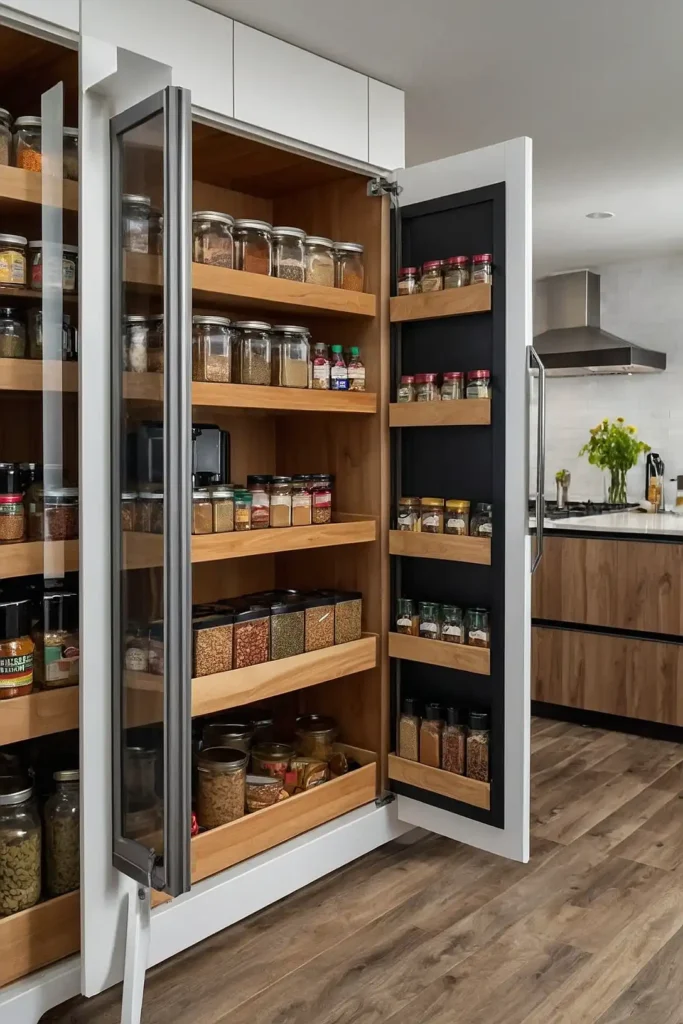
Mount specialized spice racks or drawer inserts for alphabetical organization and easy access.
Choose systems that accommodate different bottle sizes effectively.
Include labels and expiration date tracking for freshness management. Consider magnetic containers for metal shelving systems when appropriate.
You’ll find spices quickly while maintaining freshness and reducing duplicate purchases.
Organized spice storage makes cooking more enjoyable and efficient.
14: Create Freezer Overflow Storage
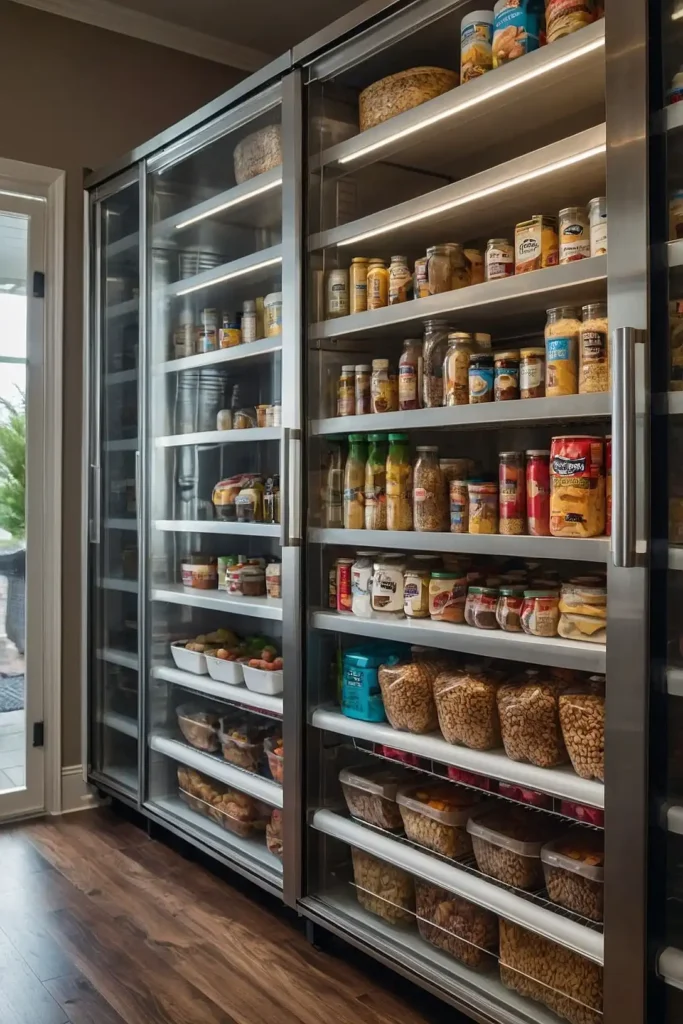
Designate pantry space for frozen food overflow when your freezer reaches capacity.
Use insulated bags or containers for temporary storage.
Include a small freezer unit if space and electrical access allow for expansion.
This helps during bulk shopping trips or seasonal food preservation.
You’ll handle freezer overflow gracefully while maintaining food safety and organization standards.
This flexibility prevents wasted food and money.
15: Add Chalkboard or Whiteboard Surfaces
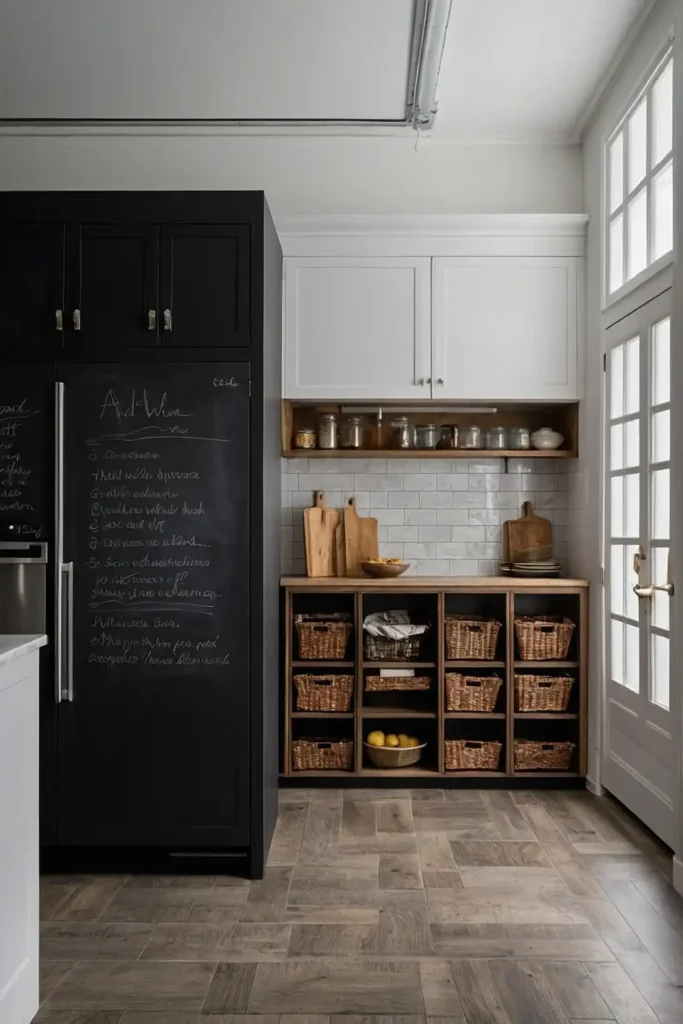
Install writing surfaces for grocery lists, meal planning, and inventory tracking. Choose magnetic options for added functionality and convenience.
Include hooks for hanging measuring spoons, bags, or frequently used tools. This creates a command center for kitchen organization and planning.
You’ll stay organized while keeping important information visible and easily updatable.
This system helps prevent overbuying and forgotten items.
16: Design Recycling and Compost Centers
Include designated areas for recycling bins and compost containers within the pantry space. Choose lidded containers to control odors effectively.
Sort recyclables by type using clearly labeled containers for easy disposal. This keeps recycling organized and out of main kitchen areas.
You’ll maintain environmental responsibility while keeping sorting systems convenient and accessible.
This reduces kitchen clutter and streamlines waste management.
17: Install Can Dispenser Systems
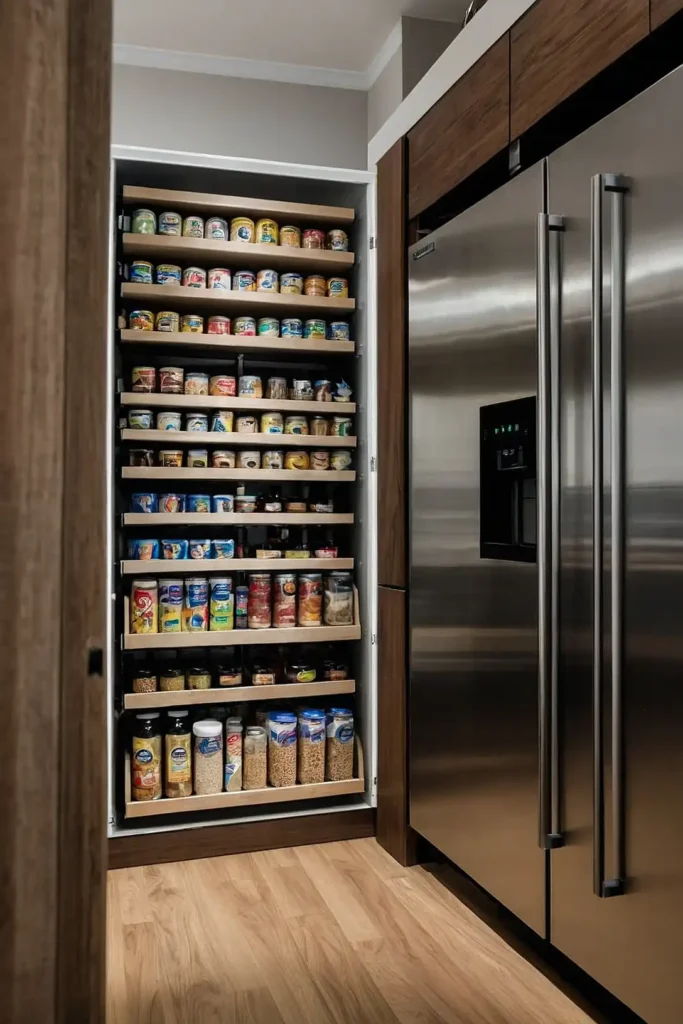
Add slanted can dispensers that automatically rotate stock using gravity-fed systems. These ensure older cans get used first consistently.
Choose adjustable dispensers that accommodate different can sizes from soup to tomatoes. This prevents cans from getting lost behind newer purchases.
You’ll maintain proper food rotation while maximizing can storage efficiency throughout the space.
These systems make inventory management almost automatic.
18: Create Emergency Food Storage
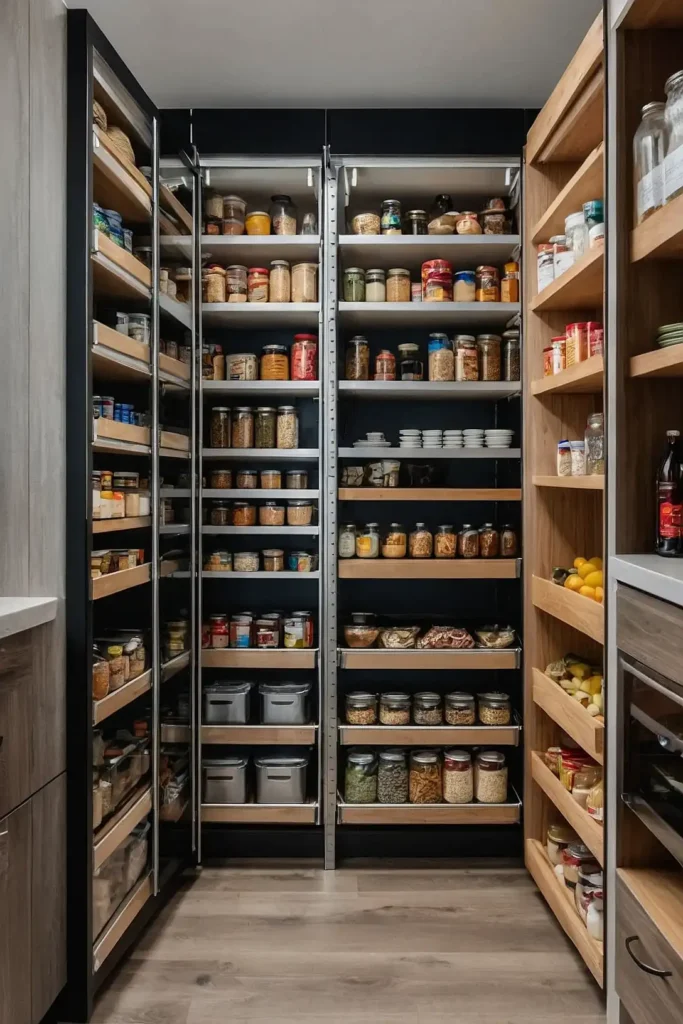
Designate areas for emergency food supplies and disaster preparedness items.
Use airtight containers for long-term storage requirements.
Include water storage, batteries, and emergency cooking supplies in this dedicated section. Rotate stock regularly to maintain freshness and readiness.
You’ll prepare for emergencies while maintaining organized long-term food storage systems.
This peace of mind protects your family during difficult times.
19: Add Temperature and Humidity Controls
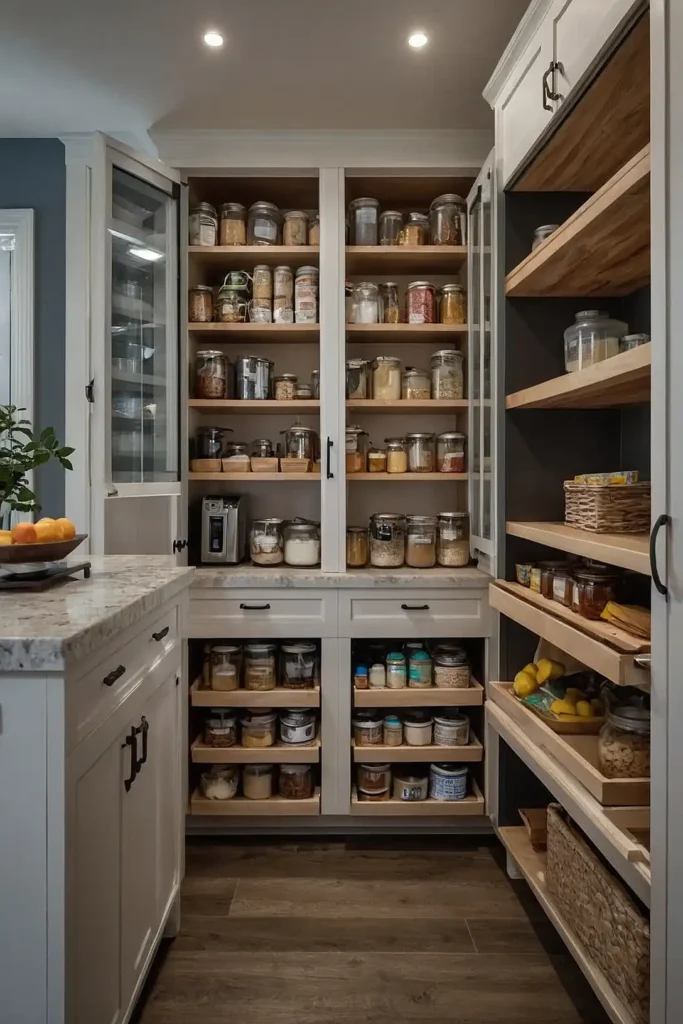
Install ventilation fans or dehumidifiers to maintain optimal food storage conditions throughout the year.
Monitor temperature with digital gauges.
Include air circulation systems to prevent moisture buildup and pest problems.
This protects food quality and extends shelf life significantly.
You’ll create ideal storage conditions while preventing spoilage and waste. Proper climate control maintains food safety and quality consistently.
20: Design Grab-and-Go Snack Stations
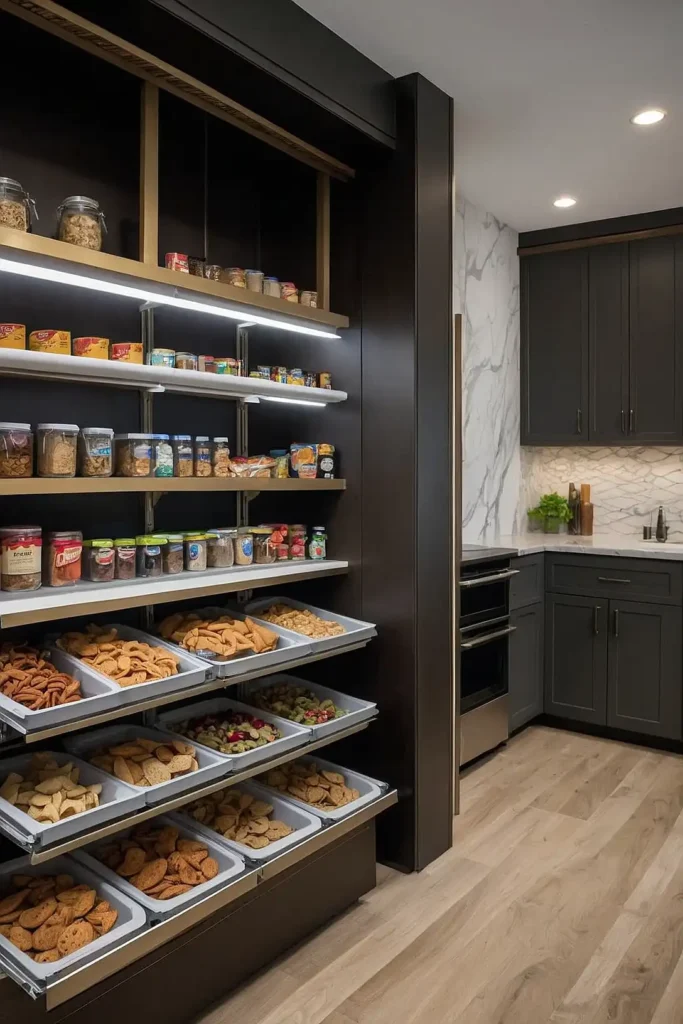
Create designated areas with pre-portioned snacks for busy family schedules and school preparations. Use clear containers for easy identification.
Include healthy options at eye level and less healthy choices higher up.
This encourages better eating habits while maintaining convenience.
You’ll streamline morning routines while promoting healthy snacking habits for growing families.
This system saves time during busy weekday preparations.
21: Install Countertop Work Surfaces
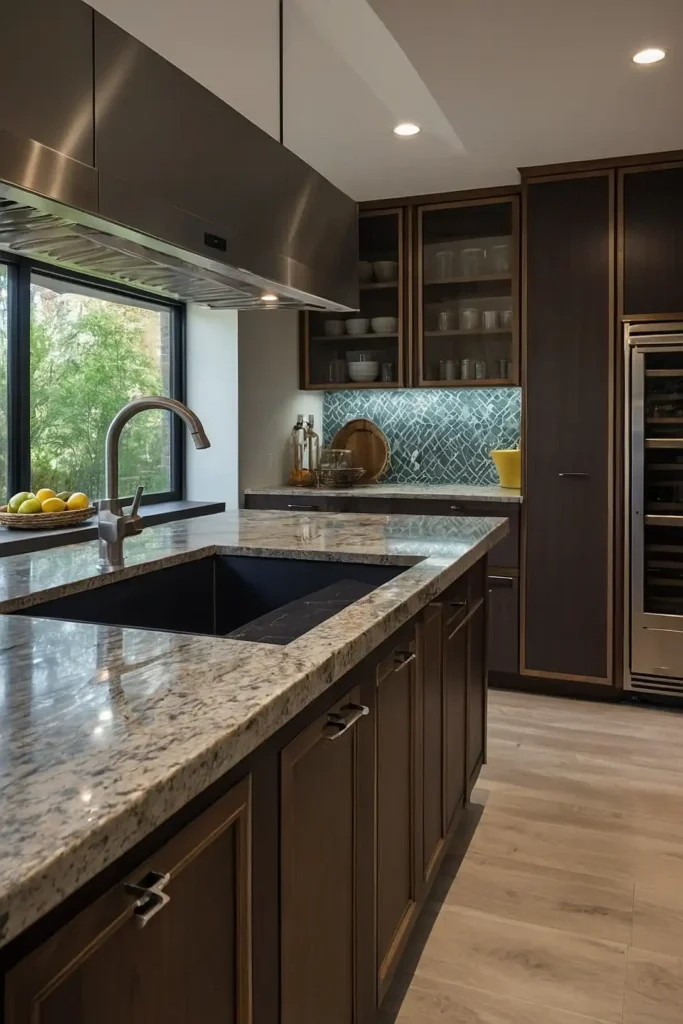
Add small countertops or pull-out work surfaces for food preparation and organization tasks.
Choose materials that clean easily and resist stains.
Include electrical outlets for small appliances or charging stations for kitchen devices.
This creates additional workspace outside the main kitchen area.
You’ll gain valuable preparation space while keeping pantry organization tasks convenient and efficient. This works especially well for meal planning activities.
22: Create Seasonal Storage Rotation
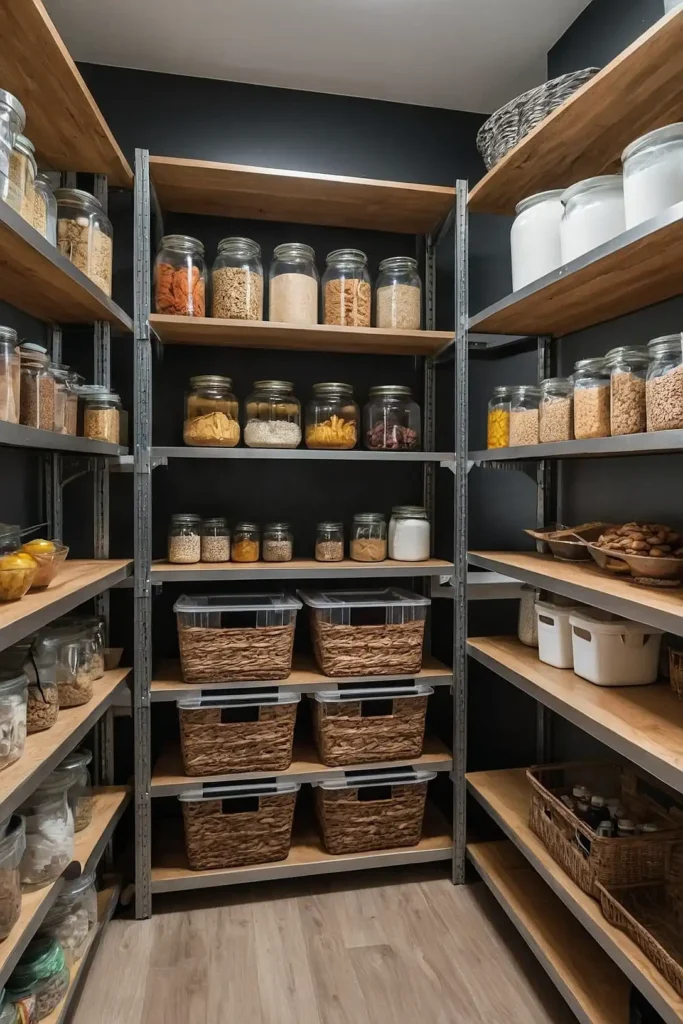
Designate areas for seasonal items like holiday baking supplies and special occasion dishes. Use clearly labeled containers for easy identification.
Store off-season items in higher or less accessible areas to make room.
Rotate seasonal items to front positions when needed throughout the year.
You’ll manage seasonal storage efficiently while keeping current items easily accessible.
This system prevents seasonal supplies from cluttering daily storage areas.
23: Add Inventory Management Systems
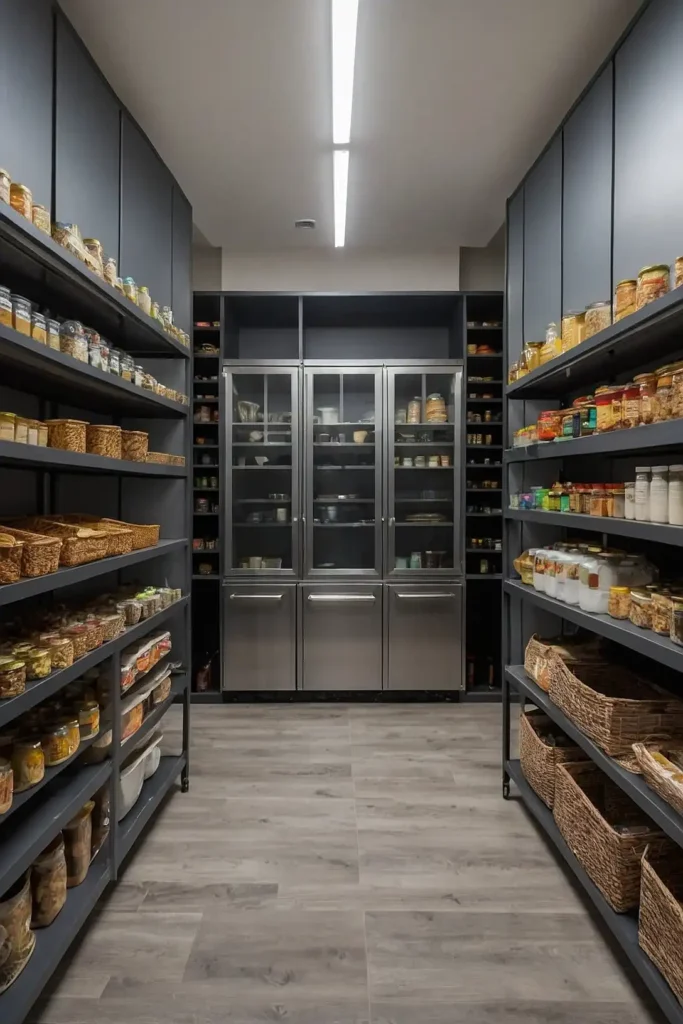
Install apps or tracking systems to monitor pantry inventory and expiration dates automatically. Use smartphone scanning for easy updates.
Include shopping lists that sync with inventory levels for efficient grocery shopping.
This prevents overbuying and reduces food waste significantly.
You’ll maintain perfect inventory control while streamlining grocery shopping and meal planning activities.
Technology makes pantry management almost effortless.
24: Design Cleaning Supply Storage
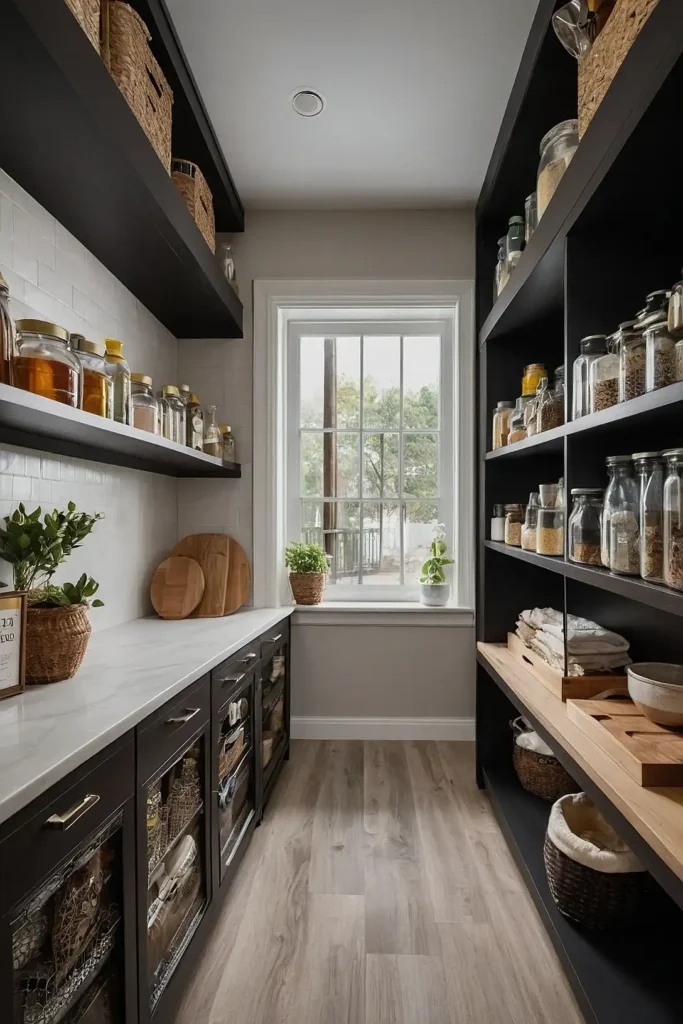
Include secure storage for household cleaning products away from food items. Use locked cabinets if children have access to the pantry.
Store cleaning supplies in a separate section with proper ventilation for safety. Include paper towels, dish soap, and frequently used cleaning items.
You’ll keep cleaning supplies organized while maintaining safety and accessibility.
This centralized storage makes household maintenance more efficient.
25: Install Vacuum Sealing Stations
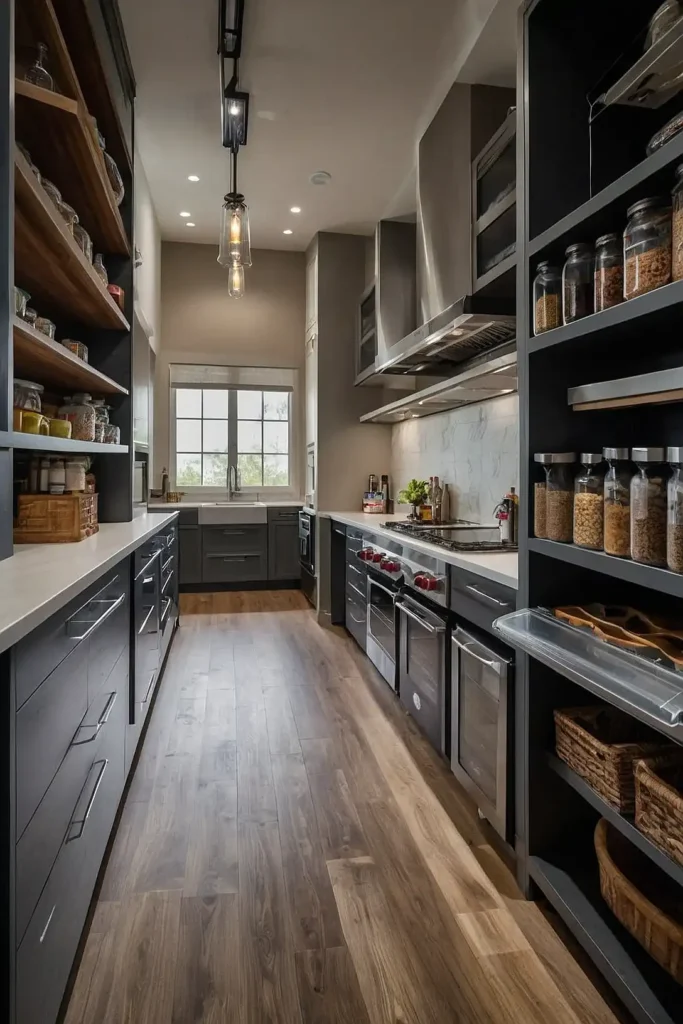
Create dedicated areas for vacuum sealing and food preservation equipment. Include counter space and electrical outlets for sealing machines.
Store vacuum bags, labels, and preservation supplies in nearby drawers or shelves. This extends food shelf life while preventing freezer burn.
You’ll preserve food efficiently while saving money on groceries and reducing waste. This system works especially well for bulk meat purchases.
26: Add Pet Food Storage Areas
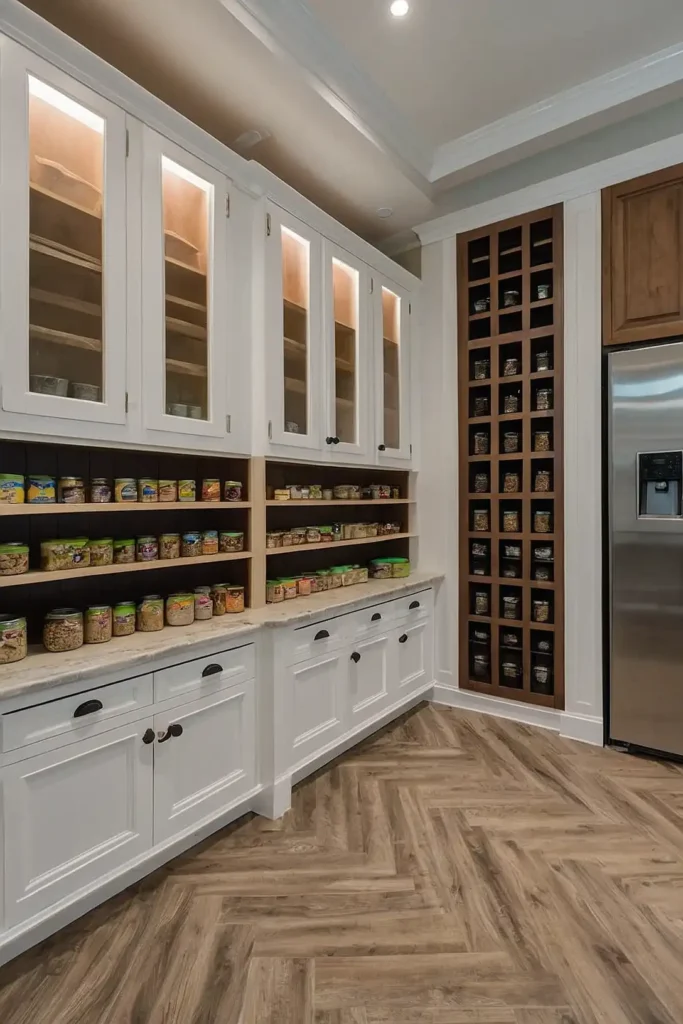
Designate secure storage for pet food and supplies using airtight containers.
Choose containers that prevent pest access and maintain freshness.
Include measuring cups, treats, and feeding accessories in this dedicated zone.
Store different pet foods separately to prevent mixing or contamination.
You’ll keep pet supplies organized while maintaining food quality and preventing pest problems.
This system works well for multiple pet households.
27: Create Multi-Purpose Storage Solutions
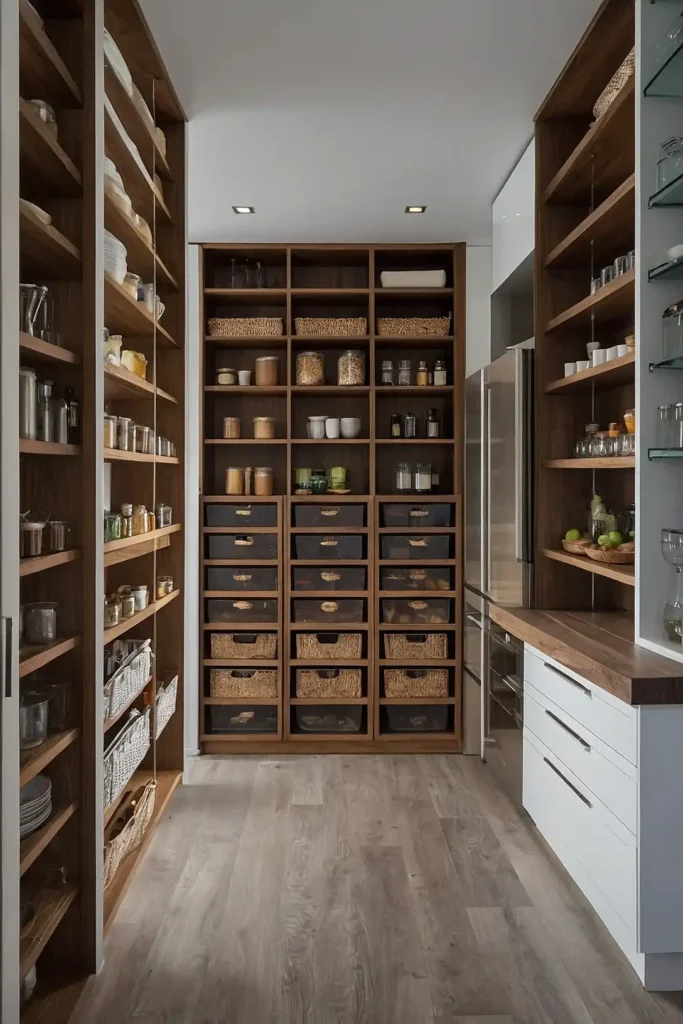
Design flexible storage systems that adapt to changing family needs and preferences.
Use modular components that reconfigure easily over time.
Include adjustable shelving, removable bins, and multipurpose surfaces for maximum flexibility.
This accommodates growing families and changing storage requirements.
You’ll invest in storage systems that grow with your family while maintaining efficiency.
Flexible solutions provide better long-term value and functionality.
Conclusion
Your walk-in pantry becomes a highly functional kitchen asset with thoughtful organization and smart storage solutions.
These ideas transform any pantry into an efficient command center.

